 After a morning of fishwife-hot rumours, it’s been officially announced that the next version of Microsoft Windows – previously code-named Longhorn – will be known as Microsoft Vista.
After a morning of fishwife-hot rumours, it’s been officially announced that the next version of Microsoft Windows – previously code-named Longhorn – will be known as Microsoft Vista.
Although wags are already suggesting that the word might apply to the distant view of the product consumers will get for many months/years, Microsoft remains confident of an ontime release in the second half of next year.
Naturally, a big new product needs a suitably uplifting tag line, so the cappuccino-supping, flipchart-flapping, brainstormin’ visioneers at Redwood have come up with:
“MicrosoftVista. Clear, Confident, Connected: Bringing clarity to your world.”
The story was first broken by anonymous sources close to the company (that generally covers anyone from the cleaner to the guy who delivers the water cooler) who revealed that Microsoft had unveiled their new name in Atlanta during the company’s internal sales event, known as the Microsoft Global Sales Briefing (that’s ‘MGB’ to those in the know).
 Possibly because of a fear of failing to release the product in the year bearing its name, Microsoft has once again shied away from its earlier practice of releasing dated operating systems (Windows95, Windows98 etc).
Possibly because of a fear of failing to release the product in the year bearing its name, Microsoft has once again shied away from its earlier practice of releasing dated operating systems (Windows95, Windows98 etc).
The current major version of Windows originally regaled under the name of ‘Whistler’ during development before being christened WindowsXP prior to its public release.
Brad Goldberg, a Microsoft product manager, said that the first beta of Vista is slated for release on Aug. 3 and will be targeted at developers and IT professionals.
Goldberg stated that Vista’s three design goals include better security, new ways to organize information, and seamless connectivity to external devices.
A second test release is anticipated to be debuted before Vista’s full release next year.
More details about the new operating system’s features will be announced on August 3.
 The long-awaited results from the Welsh Digital TV trial were published today.
The long-awaited results from the Welsh Digital TV trial were published today.  The digital signal was switched on in November 2004, running simultaneously with current analogue for three month.
The digital signal was switched on in November 2004, running simultaneously with current analogue for three month.  Transmission and Coverage – No one lost their TV service during the trial. Only three homes, which were previously in poor reception areas, could not receive the digital service and these were given a digital satellite service. Broadband was introduced during the trial and is seen as an alternative form of delivery to satellite.
Transmission and Coverage – No one lost their TV service during the trial. Only three homes, which were previously in poor reception areas, could not receive the digital service and these were given a digital satellite service. Broadband was introduced during the trial and is seen as an alternative form of delivery to satellite.  Content – Having an EPG went down well with the residents, particular when they used it to record programs on their PVR. The trialists also enthused about the ability to receive extra TV channels – after all the major benefit to consumer if the expanded choice they will be given.
Content – Having an EPG went down well with the residents, particular when they used it to record programs on their PVR. The trialists also enthused about the ability to receive extra TV channels – after all the major benefit to consumer if the expanded choice they will be given.  The North American voice over IP (VoIP) market is about to go completely bananas, with phenomenal growth predicted for the next six years, according to a report by Frost & Sulllivan.
The North American voice over IP (VoIP) market is about to go completely bananas, with phenomenal growth predicted for the next six years, according to a report by Frost & Sulllivan.  The VoIP’s operator’s joy could be the incumbent local exchange carriers (ILECs) misery, as Internet telephony represents a direct threat their market share and revenue.
The VoIP’s operator’s joy could be the incumbent local exchange carriers (ILECs) misery, as Internet telephony represents a direct threat their market share and revenue.  The report concludes that it’s the quality of service and the VoIP feature set that’s attracting punters to the service rather than a desire to get in with the hi-tech crowd.
The report concludes that it’s the quality of service and the VoIP feature set that’s attracting punters to the service rather than a desire to get in with the hi-tech crowd.  TV cables could provide broadband Internet access speeds up to a trouser-flapping 100 megabits per second as early as next year according to Finnish broadband equipment maker Teleste.
TV cables could provide broadband Internet access speeds up to a trouser-flapping 100 megabits per second as early as next year according to Finnish broadband equipment maker Teleste.  “This is a cost-efficient technology, as we use the cable TV networks which are already in place,” Teleste’s CEO Jukka Rinnevaara told Reuters.
“This is a cost-efficient technology, as we use the cable TV networks which are already in place,” Teleste’s CEO Jukka Rinnevaara told Reuters.  The foxy Finns are currently running field trials with cable TV service provider Essent in the Netherlands, but are yet to reach the top speeds they predicts will be available to most homes in a few years time.
The foxy Finns are currently running field trials with cable TV service provider Essent in the Netherlands, but are yet to reach the top speeds they predicts will be available to most homes in a few years time.  Rissanen calculated the cost of connecting a home to the high speed ethernet-to-the-home technology could range from US$60.30 (~£35, ~€50) and US$241 (~£140, ~€200).
Rissanen calculated the cost of connecting a home to the high speed ethernet-to-the-home technology could range from US$60.30 (~£35, ~€50) and US$241 (~£140, ~€200).  Feebly posing as some sort of independent study into the portable computer use, a recent US survey commissioned by Intel reveals that 34 per cent of respondents or their families have taken a laptop PC with them on vacation, with just over half likely to take a laptop PC on a future vacation. Oh that’s lucky … aren’t Intel involved with laptops in some way?
Feebly posing as some sort of independent study into the portable computer use, a recent US survey commissioned by Intel reveals that 34 per cent of respondents or their families have taken a laptop PC with them on vacation, with just over half likely to take a laptop PC on a future vacation. Oh that’s lucky … aren’t Intel involved with laptops in some way?  The growth of compact, wireless-enabled laptop PCs [cue: another plug for Intel Centrino here] and hotspots have made it easier for globe trotters to taunt their office-bound chums back home with beach photos, as well as keep in touch with work, news, sports and grab local information.
The growth of compact, wireless-enabled laptop PCs [cue: another plug for Intel Centrino here] and hotspots have made it easier for globe trotters to taunt their office-bound chums back home with beach photos, as well as keep in touch with work, news, sports and grab local information. 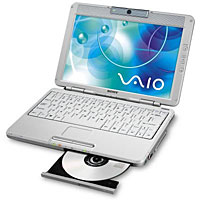 Of course, seasoned PC users have dragged laptops around with them for years on end, with many of the early adoptin’ cognoscenti choosing to travel even lighter by using PocketPCs/smartphones for keeping in touch while away from home.
Of course, seasoned PC users have dragged laptops around with them for years on end, with many of the early adoptin’ cognoscenti choosing to travel even lighter by using PocketPCs/smartphones for keeping in touch while away from home.  The rurmour mill continues to hum with speculation that Apple are set to introduce a video playing iPod-like device in the near future.
The rurmour mill continues to hum with speculation that Apple are set to introduce a video playing iPod-like device in the near future. 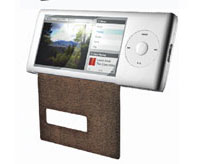 This has led to speculation that the company will be revising the iPod to create something like the ‘vPod’, a concept device created by design firm Pentagram which was published in Business 2.0 Magazine in March.
This has led to speculation that the company will be revising the iPod to create something like the ‘vPod’, a concept device created by design firm Pentagram which was published in Business 2.0 Magazine in March. 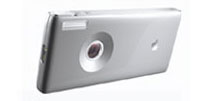 The big problem with trying to create a multimedia device is that people demand quite different things for mobile audio and video.
The big problem with trying to create a multimedia device is that people demand quite different things for mobile audio and video.  Armchair football fans around Europe will soon be able to enjoy live Champion’s League matches over the Internet and mobile phones.
Armchair football fans around Europe will soon be able to enjoy live Champion’s League matches over the Internet and mobile phones.  Champions League coverage in the UK is provided by BSkyB and ITV (both of whom look likely to retain their current rights), and the Internet simulcasts could provide a honey pot for new revenue streams with advertising and betting partners.
Champions League coverage in the UK is provided by BSkyB and ITV (both of whom look likely to retain their current rights), and the Internet simulcasts could provide a honey pot for new revenue streams with advertising and betting partners.  BSkyB has already announced its commitment to
BSkyB has already announced its commitment to 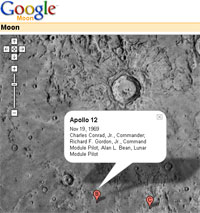 In honour of the first manned Moon Landing back in July 20, 1969, Google have launched an out of this world version of their Google Maps service – Google Moon.
In honour of the first manned Moon Landing back in July 20, 1969, Google have launched an out of this world version of their Google Maps service – Google Moon.  Although you can use a sliding scale to zoom into the surface – just like the terrestrial version – and view landing sites, there are limitations to how close to the surface you can zoom because of insufficient NASA imagery.
Although you can use a sliding scale to zoom into the surface – just like the terrestrial version – and view landing sites, there are limitations to how close to the surface you can zoom because of insufficient NASA imagery.  Glad you asked, and yes, the development of our Lunar hosting and research centre continues apace.
Glad you asked, and yes, the development of our Lunar hosting and research centre continues apace.  Google are also advertising jobs at their Google Copernicus Hosting Environment and Experiment in Search Engineering (G.C.H.E.E.S.E.), offering “high-density high-delivery hosting (HiDeHiDeHo) and de-oxygenated cubicle dwelling.”
Google are also advertising jobs at their Google Copernicus Hosting Environment and Experiment in Search Engineering (G.C.H.E.E.S.E.), offering “high-density high-delivery hosting (HiDeHiDeHo) and de-oxygenated cubicle dwelling.”  BT has announced that it will be doubling the speed of its entry-level broadband service.
BT has announced that it will be doubling the speed of its entry-level broadband service.  BT’s generosity knows some bounds though, with its no frills package retaining its monthly usage limit at 1 gig.
BT’s generosity knows some bounds though, with its no frills package retaining its monthly usage limit at 1 gig. 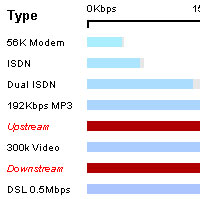 This is the second free upgrade that BT has introduced, with the telecoms giant upping the speed for all of its retail broadband customers back in February.
This is the second free upgrade that BT has introduced, with the telecoms giant upping the speed for all of its retail broadband customers back in February.  I quickly learnt that not only was I paying more than most, but my BT connection was as swift as a sleepy sloth on a hot day compared to the rocket-like speeds quoted by others.
I quickly learnt that not only was I paying more than most, but my BT connection was as swift as a sleepy sloth on a hot day compared to the rocket-like speeds quoted by others. 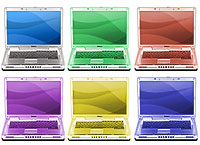 The doomsayers were predicting a slow year for PC shipments, but a continuing shift to notebooks and falling PC prices have made it a bumper second quarter for the worldwide PC market, according to research companies IDC and Gartner.
The doomsayers were predicting a slow year for PC shipments, but a continuing shift to notebooks and falling PC prices have made it a bumper second quarter for the worldwide PC market, according to research companies IDC and Gartner. 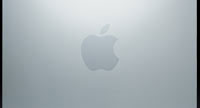 The company enjoyed big sales outside the US and remains the market share leader in many countries throughout Europe.
The company enjoyed big sales outside the US and remains the market share leader in many countries throughout Europe.